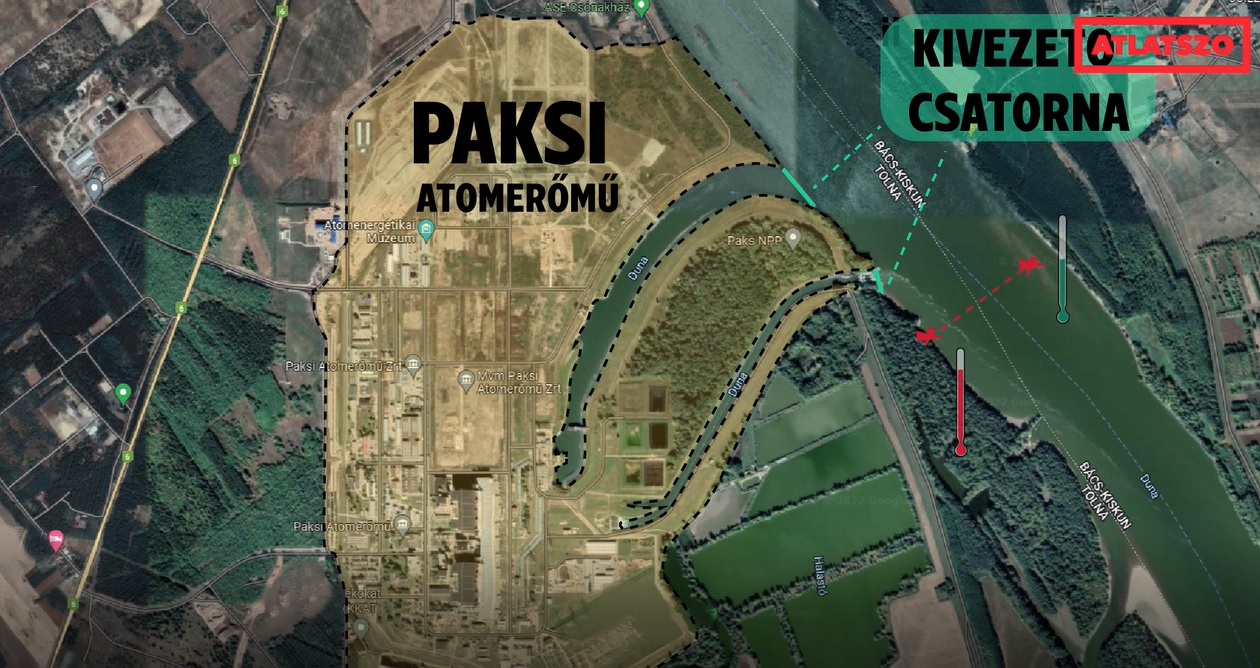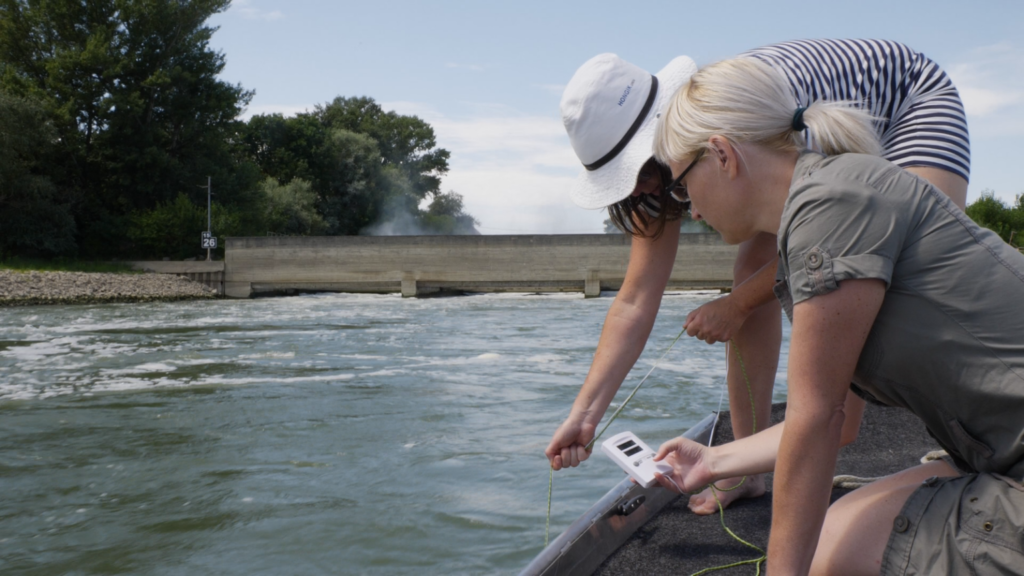The https://english.atlatszo.hu use cookies to track and profile customers such as action tags and pixel tracking on our website to assist our marketing. On our website we use technical, analytical, marketing and preference cookies. These are necessary for our site to work properly and to give us inforamation about how our site is used. See Cookies Policy
Paks NPP is operating at reduced capacity but still cannot keep the 30°C Danube temperature limit to protect wildlife
It’s been several years since we usually head to Paks after the harsh summer heat and burn ourselves for hours in the scorching sun in the company of a water thermometer to make sure that the Paks nuclear power plant (NPP) is complying with the 30°C temperature limit set to protect the Danube’s wildlife. We did the same on Wednesday 19 July as well, when the water authorities reported that the Danube’s base temperature had been very warm for several days. The NPP is starting to measure how much of the hot water it releases is warming up the Danube above 25 degrees. According to their internal rules, above 29.5°C the power plant’s output is reduced, i.e. production is cut back so that the plant releases less hot water into the river. For example, this happened on 13 July, 18 July, and on the day of our measurement, 19 July as well. However, in our experience, this was not enough to keep the plant within the 30°C limit, and the measurement method used is probably unsuitable to comply with the legal limit.
The Paks nuclear power plant releases the cooling water from the Danube back into the Danube, warming it up: the outflowing water is about 33-35°C. This mixes with the cooler water after a while, but in the meantime, it keeps the river considerably warmer for kilometres.

Legislation to protect the Danube’s wildlife states that “at any point on a stretch of water 500 metres downstream from the point of discharge, the temperature of the receiving water must not exceed 30°C.” (red dashed line in the picture below).

The cooling water inlet and outlet channels are marked in green, and the measuring section is in red.
According to the official data provided by the nuclear power plant, the temperature of the Danube has never reached 30°C at this location (2018, 2019, 2022, 2023). However, we have experienced higher temperatures on each occasion.
On Wednesday, 19 July, we measured between 27.5 and 31°C at different points of the measuring section. On the same day, the daily values reported by the power plant were between 29.75 and 29.79°C.
This is how the official data is measured
There is no legislation on exactly where, how, and when measurements should be taken within the measurement section. Only a 2010 study by the Department of Water Utilities and Environmental Engineering at the Budapest University of Technology and Economics provides a clearer understanding of this. It consists of taking measurements from a measuring boat, which is supposed to be travelling at a speed of 0.5 m/s, at depths of 50 cm and 150 cm, with sampling times of 1 second, using a calibrated measuring device.
Measurement results will be used to filter out measurements that are close to the background temperature of the Danube and multiple measurements over a short distance due to boat roll. Then all the measured values are statistically evaluated. This value is then published as the official daily number. The time of the measurement is not specified, but we learned from a previous FOI request that it is usually taken between 11 am and 2 pm. This year and last year, we saw the Paks measuring boat on site at around half past 11:00 – 12:00.
We also measured at these two depths, but we also measured in the 25-metre coastal band, which is also part of the measurement section.
We measured once at a similar time as the power plant (shortly after noon), but also late afternoon, after 5 pm. Another difference is that we did not average the values obtained. Of course, our thermometer is not officially calibrated and therefore cannot be considered as an official measurement, but we believe that the plant’s method raises several questions.
- Since the river is typically warmest in the late afternoon, according to hydrological data, it should be measured then, not in the morning. For example, on 19 July, the Danube had a base temperature of 25.3-25.4°C around 11am-12pm and 26˚C between 17pm-20pm.
- Since the legislation says that the temperature limit must be met at any point in the stretch in question, if a single recorded value is more than 30°C, at whatever depth it is measured, it should be considered as an exceedance of the legal limit set by law.
Last year, we contacted numerous experts on water temperature measurement, but the only one we received a meaningful response from was the university that developed the measurement methodology. “The subject is interesting from a technical point of view (e.g. a review) and very important from an environmental point of view”.
Too hot even at reduced capacity
The Paks NPP was operating at a capacity of only about 1,250 MW instead of 2,000 MW after 3 pm on 19 July and its capacity had already been reduced to 1,500 MW the day before. Thus, the high water temperatures above were measured in reduced mode.
According to the NPP’s communication, the high water temperature of the Danube was the reason for the reduction of the NPP’s output on 19 July, while MAVIR’s communication states that it was due to a malfunction (condenser failure) on that day.
At the time of our measurement last year, on 18 August 2022, the plant was operating at a much lower capacity than now, at around 800 MW, but even then the limit was exceeded. However, the nuclear power plant did not measure any temperature exceedances.
An increasingly hot topic
According to the report we managed to obtain through a FOI request, in 1946 the average annual temperature of the Danube was less than 11°C, in 2020 it was 13°C and in 2018 it was an outstanding 13.5°C at the Paks monitoring station. Data also shows that the rate of warming is accelerating. The authors expect a higher or faster warming in the future than has been the case so far: “the likely annual average water temperature increase is 0.054°C/year for the future”.
By comparison, the warming rate between 1976 and 2014 was only 0.028°C/year.
The Danube and the nuclear power plant problem will therefore remain on the agenda, and will probably get worse as a result of climate change and global warmint. The construction of another nuclear power plant at Paks would also add to the already existing problem.
Translated by Zita Szopkó. The original, Hungarian version of this story was written by Orsolya Fülöp, with the contribution of Eszter Katus, and Tamás Bodoky, and can be found here. Video by Bence Bodoky. This story was supported by Journalismfund Europe.


